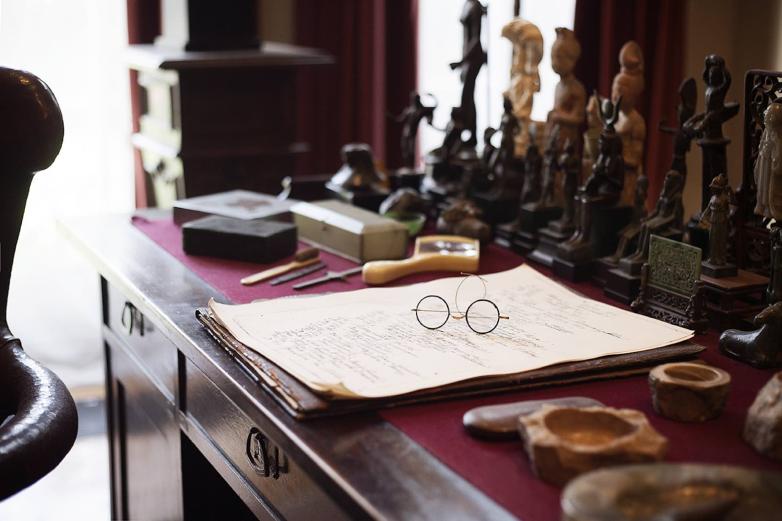Exhibition Uses Freud's Letters and Books to Show Impact in Latin America

Freud's study at The Freud Museum
A new exhibition opening later this month will be the first time the Freud Museum will explore the phenomenal impact of Sigmund Freud in Latin America.
While Freudian psychoanalysis is often considered a European practice, its impact in Latin America has arguably been the most dramatic. In the 21st century, Latin America is home to some of the most important psychoanalytic centres in the world and Buenos Aires has the highest number of psychoanalysts per capita in the world.
Freud and Latin America will explore the reasons why Freud’s ideas were so warmly welcomed and remain enduringly influential on the culture and society of countries across the region.
The exhibition will present a combination of personal letters between Freud (1856-1939) and those who adopted his theories, photography, art, books from Freud’s own library, comics, magazines and newspapers from across Latin America. It will investigate the boyhood fascination that Freud had for Spanish-language books, before showing how psychoanalysis took root.
The exhibition begins with Freud’s early fascination with the Spanish language. He was self-taught, inspired by the wish to savour his favourite book, Don Quixote by Miguel de Cervantes, in its original language. As a teenage boy, he exchanged letters in Spanish with his friend Eduard Silberstein, each boy adopting a Spanish pen-name inspired by Cervantes’s novella The Dialogue of the Dogs.
Freud’s enthusiasm continued into the writing of his 1884 book on the use of cocaine (Über Coca), which discusses the uses of the coca plant in Bolivia and Peru. In the 1920s Freud formed a close relationship with Peruvian psychiatrist Honorio Delgado whom he described as his ‘first foreign friend’, exchanging letters, books and presents over the ensuing decades.
When Freud moved to London in 1938 as a refugee, he was able to bring 34 of his 62 Latin American books, many of which had been inscribed with dedications by their authors. These can be seen both in the exhibition and in Freud’s study at the Museum.
The exhibition will reflect on the many ways in which Freud has been woven into Latin American popular culture. Examples include the 1930s Buenos Aires newspaper Jornado which invited readers to submit accounts of their dreams for ‘analysis’ by ‘Freudiano’, and an Argentinian women’s magazine, Idilio, that analysed readers’ dreams, alongside surrealist artworks by photographer, Grete Stern.
Jamie Ruers, Curator of Freud and Latin America, said: “This exhibition will tell fascinating stories about Sigmund Freud that most people won’t know. We will explore his earliest relationships with key Latin American figures to whom he wrote letters, showing a humorous side to his personality. From Argentine magazines and Mexican comic books, to photographs, letters, books, and statues in his collection, Freud and Latin America will shed a fresh and colourful light on Sigmund Freud’s impact on a global scale in the early 20th century.”
Freud and Latin America runs January 17 through July 14 at the Freud Museum in London, the final home of Freud and his daughter Anna, the pioneering child psychoanalyst.















